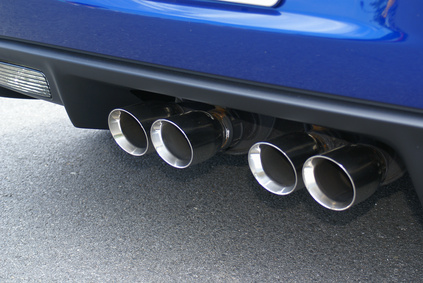
The performance difference in single and dual-exhaust systems is solely based on the amount of evacuation produced. Although two pipes can evacuate more exhaust, a single exhaust system with larger evacuation pipes provides the same performance.
Each cylinder in the engine has a pipe extending from it for exhaust. All pipes are joined into one pipe as an exit point that connects to the system's head pipe. The head pipe joins with the catalytic converter, which converts toxic fumes to reusable air. The catalytic converter then sends the exhaust through the muffler, which acts as a second filter, sending the remaining air through the tail pipe.
Single exhaust systems have one catalytic converter, one muffler and one exhaust pipe. They cannot be converted into true dual exhaust systems because smog regulations do not allow catalytic converter changes. When properly configured, a single exhaust system is just as productive as a dual.
Dual exhaust systems are either true-dual or split-dual systems. The true-dual exhaust includes two catalytic converters, two mufflers and two exhaust pipes. The split-dual system has one catalytic converter, one muffler and two exhaust pipes. According to Flow Master Mufflers, dual exhaust systems increase engine power, use gas more efficiently and reduce engine noise.